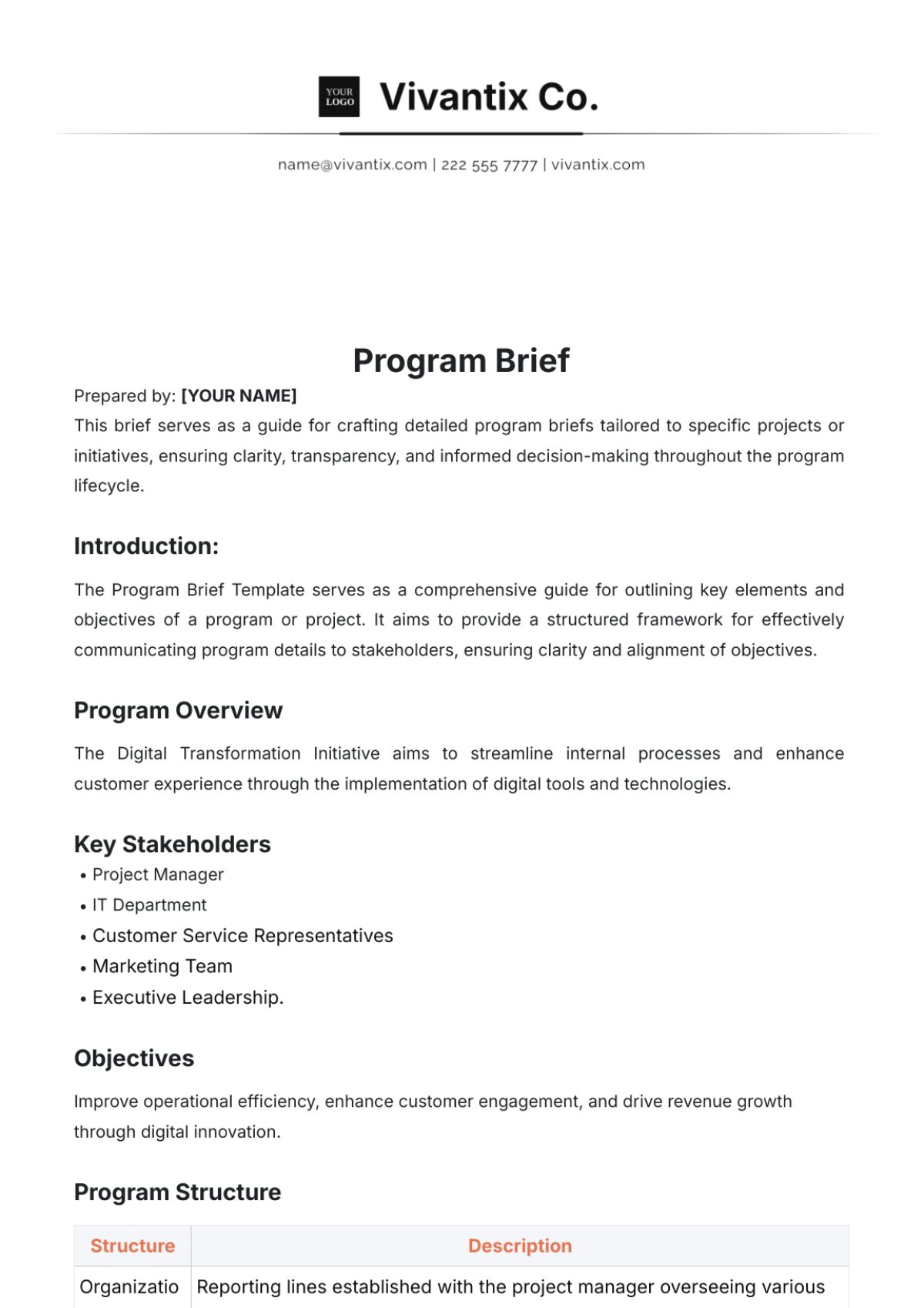Program Brief
Prepared by: [YOUR NAME]
This brief serves as a guide for crafting detailed program briefs tailored to specific projects or initiatives, ensuring clarity, transparency, and informed decision-making throughout the program lifecycle.
Introduction:
The Program Brief Template serves as a comprehensive guide for outlining key elements and objectives of a program or project. It aims to provide a structured framework for effectively communicating program details to stakeholders, ensuring clarity and alignment of objectives.
Program Overview
The Digital Transformation Initiative aims to streamline internal processes and enhance customer experience through the implementation of digital tools and technologies.
Key Stakeholders
Objectives
Improve operational efficiency, enhance customer engagement, and drive revenue growth through digital innovation.
Program Structure
Structure | Description |
|---|
Organizational Structure | Reporting lines established with the project manager overseeing various workstreams including IT infrastructure, software development, and user experience |
Components | Phases include assessment and planning, implementation, testing and refinement, and ongoing support and maintenance. |
Timeline and Milestones
Timeline: 12-month project duration with major milestones including completion of requirements analysis (Month 1), deployment of initial digital solutions (Month 6), and full integration and optimization (Month 12).
Critical Dates: Launch of the pilot phase (Month 4), completion of user acceptance testing (Month 9), and official rollout to all departments (Month 10).
Budget and Resources
Budget Allocation: $500,000 allocated for software licenses, infrastructure upgrades, and consultancy fees.
Resources: Dedicated project team consisting of 8 full-time employees, supplemented by external vendors for specialized expertise.
Risk Management
Risks: Potential challenges include resistance to change, technical issues during implementation, and unforeseen integration complexities.
Mitigation: Change management initiatives, thorough testing protocols, and contingency plans for rapid response to technical issues.
Communication Plan
Strategy: Regular project status updates via email to stakeholders, monthly progress meetings with key departments, and quarterly presentations to executive leadership.
Channels: Internal collaboration platforms, project management software, and quarterly town hall meetings for broader communication.
Monitoring and Evaluation
Metrics: Key performance indicators include time saved through process automation, customer satisfaction scores, and revenue growth attributed to digital initiatives.
Evaluation: Monthly progress reviews by the project team, quarterly reviews with executive sponsors, and annual program evaluation against predefined success criteria.
Conclusion
Summary: The Digital Transformation Initiative presents an opportunity to revolutionize our operations and customer interactions through strategic digital investment.
Next Steps: Commence with the requirements gathering phase and initiate stakeholder engagement to ensure alignment and buy-in.
Brief Templates @ Template.net






























